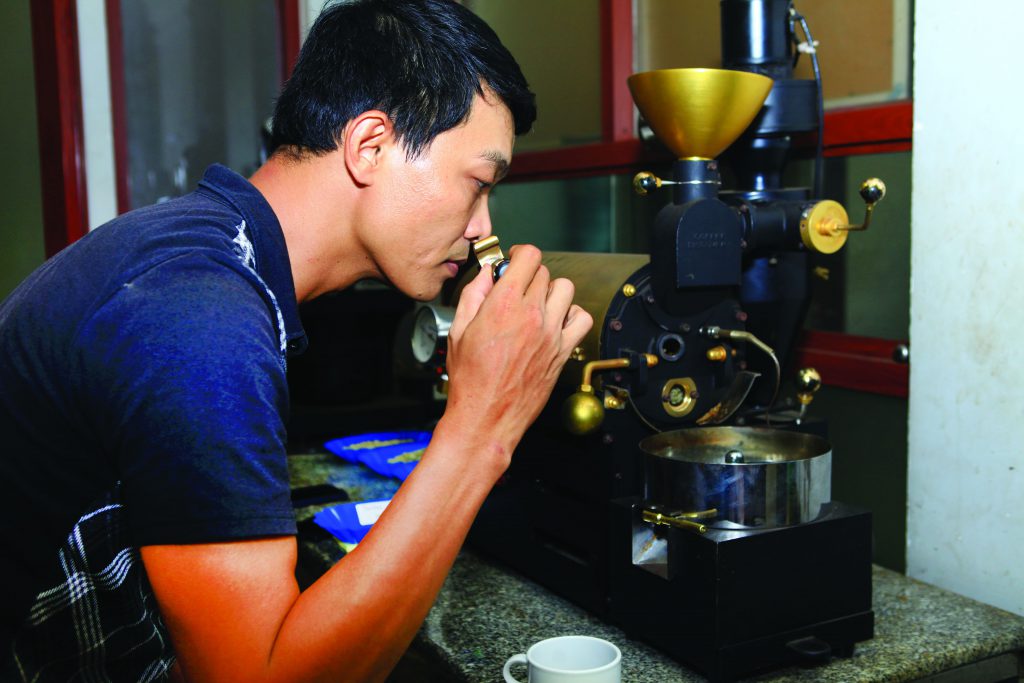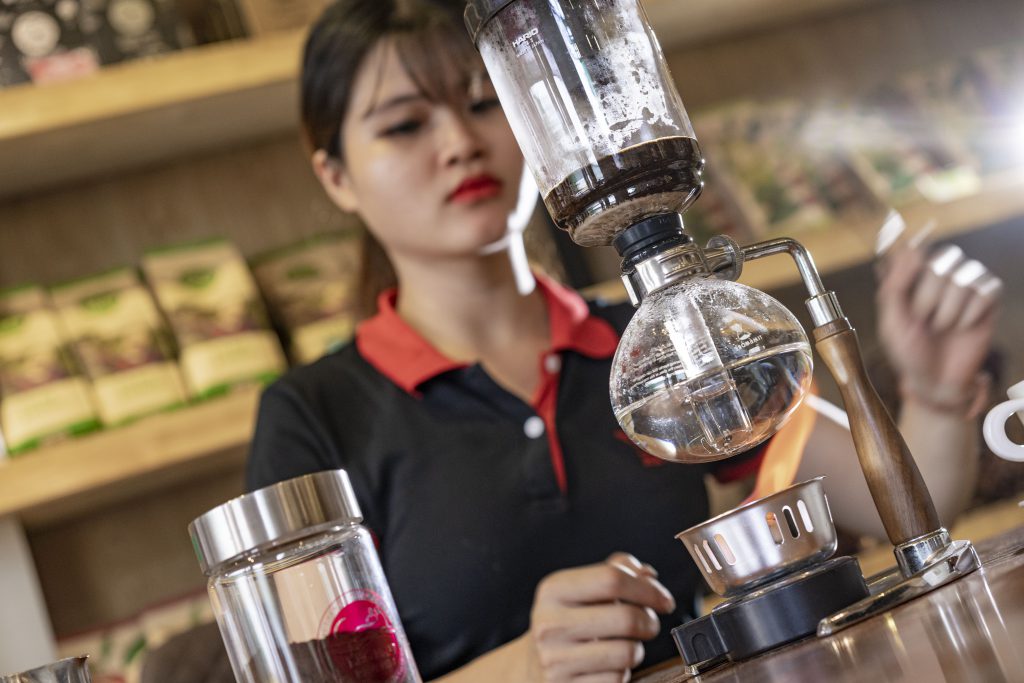Hai Au
Coffee in Vietnam is changing, with new standards of quality transforming the café landscape.
Coffee has been an integral part of Hanoi life for more than 150 years, ever since it was introduced to Vietnam by the French. Despite its foreign roots, coffee has long taken on a local character in taste and drinking culture. Hanoi is filled with small local cafés, many opened by young entrepreneurs, which have moved through a variety of trends. Around a decade ago, a popular style was the “book/coffee” shop, in which the décor featured floor-to-ceiling bookshelves and customers could linger for hours with a tome in hand. However, this model seemed to fall victim to the rise of the smartphone and web-surfing habits of customers. Another trend that came and went was found in Mr. Nghia’s pet café, which was a shelter for various kinds of reptiles. This coffee shop and other cat cafes were popular among youth but many also didn’t manage to last.
The latest concept to take hold in Hanoi and Vietnam as a whole is a move towards higher quality, “clean” coffee. Many purveyors have started following organic principles, using raw coffee beans with no chemical additives to provide a purer taste of coffee. According to experts, the strong, bittersweet taste of that Hanoi coffee enthusiasts have been enjoying all these years comes from additives; therefore, it’s been difficult to change consumption habits overnight.
The motorbike-based organic coffee vendor Reng Reng was a strange sight in Hanoi at first but became a familiar face to many people. After years, Reng Reng’s owner settled down in a shop at the corner of the Old Quarter with a bold philosophy: No WiFi and nothing but coffee from Arabica beans roasted in-house. For some locals, this non-additive coffee is an acquired taste, but those who fall in love with it can’t go back to their old brews.

With this same philosophy in mind, numerous young entrepreneurs are eagerly trying to win customers with higher-quality coffee. But to brew a flavorful cup of coffee doesn’t simply require buying raw beans and roasting them. Coffee roasting has become an intricate art almost akin to winemaking. Centers teaching standards in coffee roasting to SCA (Specialty Coffee Association) standards are popping up in Hanoi and Ho Chi Minh City, where students can learn about the steps of coffee making, from processing raw coffee beans to serving a well-brewed cup of coffee.

The results can be found in locations such as Pham The Son’s Café Dang, which is devoted to ingredient selection and an additive-free roasting process. In Ho Chi Minh City, the coffee shop Azzan has captured attention thanks not only to its quality but the cultural stories attached to its products. Every 200-gram bag of ground coffee is printed with a QR code by owner Ho The Son, and when the code is scanned, a story about Vietnamese culture and landscapes will be shown. The legends of Ha Long Bay, Hoi An’s lanterns or the rivers of Mekong Delta are told to people all over the world through Son’s coffee.
Le Tung Bach, meanwhile, is passionate about connecting farmers, processors, distributors and shops. United, a community of clean coffee that Bach is trying to build, will link coffee farms and greenhouse dryers in Da Lat, processors in HCM City and coffee shops across the country. Every step of coffee production will follow SCA standards and a portion of revenues will be donated to locals living in mountainous areas for planting trees. In this regard, the definition of clean coffee has reached a new height, aiming not only for chemical-free cups of coffee but working towards a cleaner environment.









